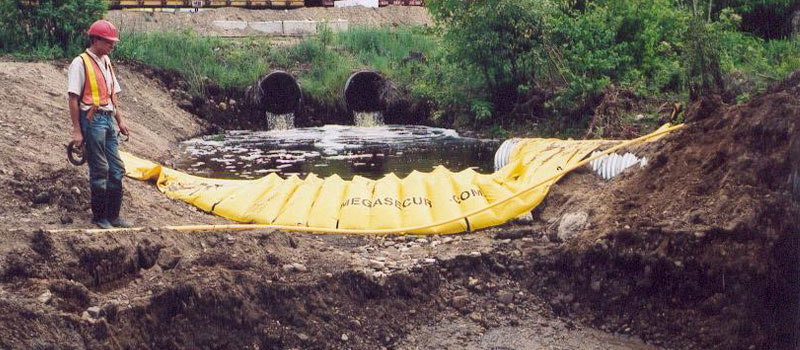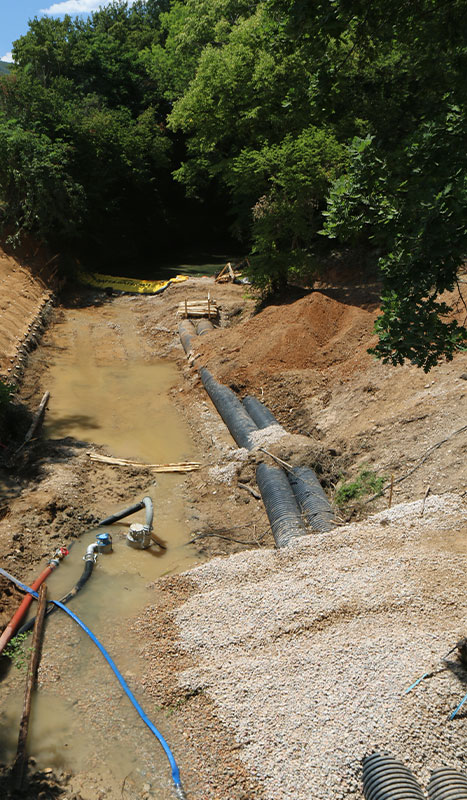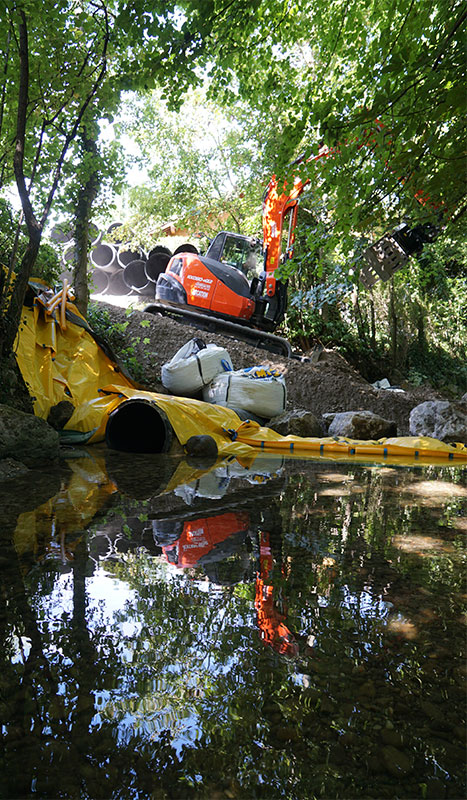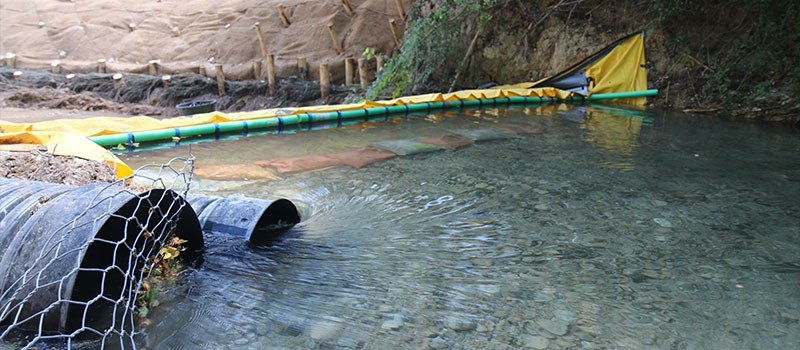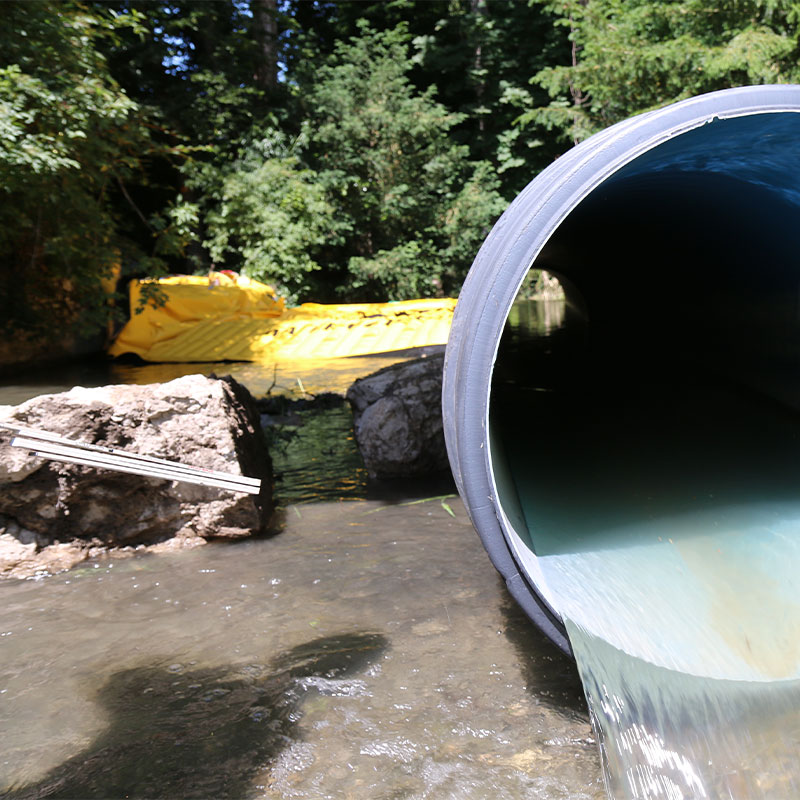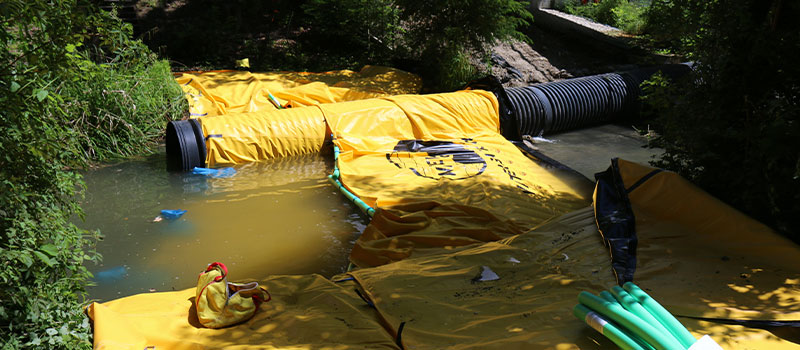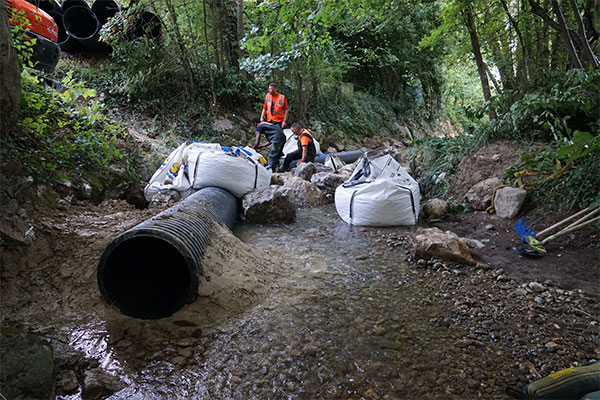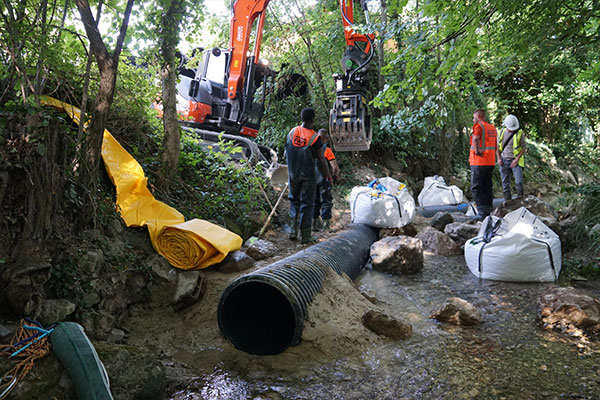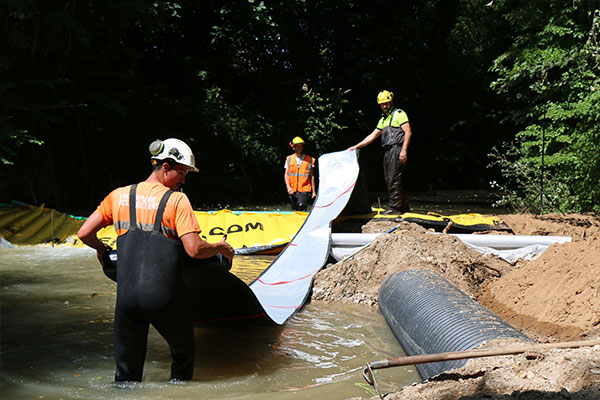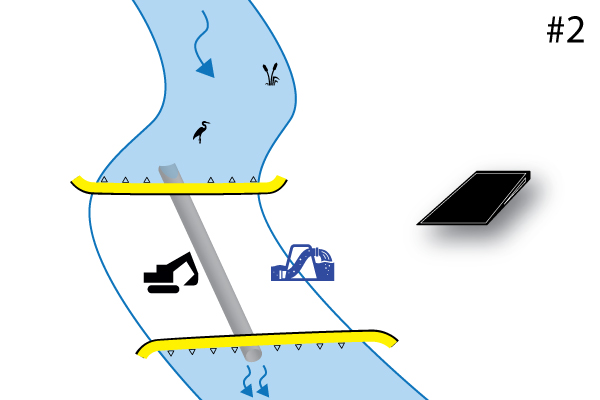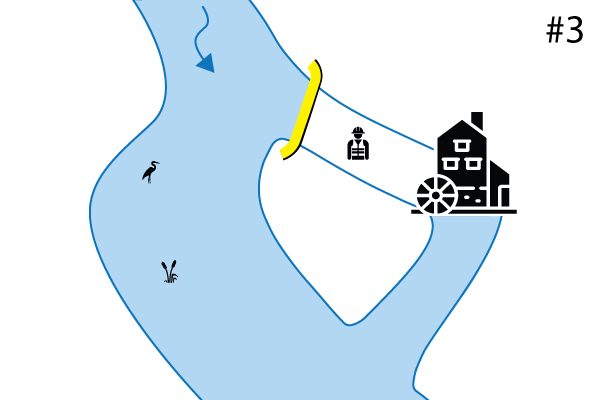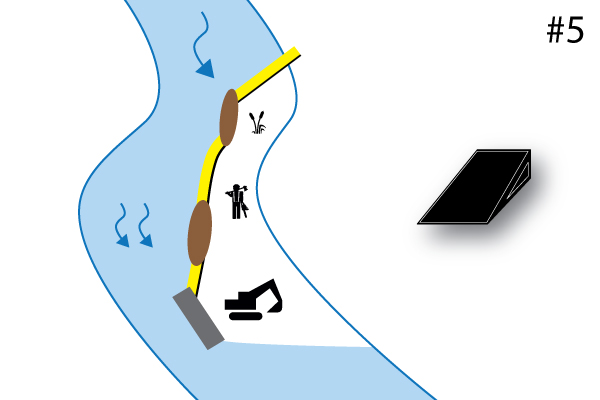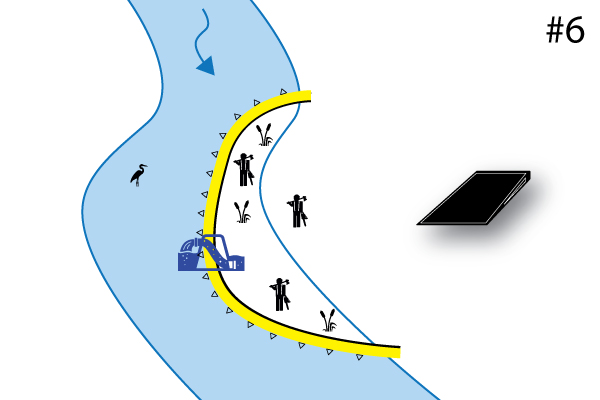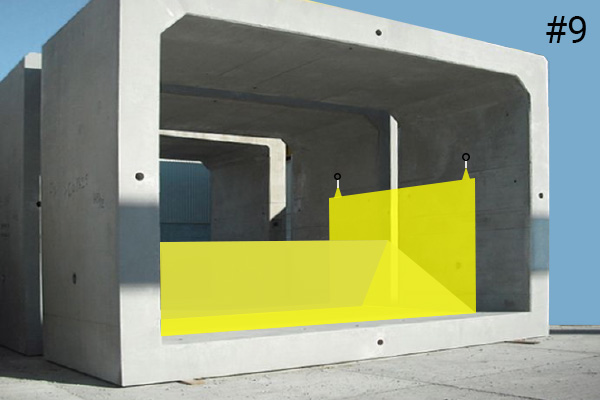# 1 | Installation ⊥ perpendicular
This is the fastest and most dramatic type of installation. The flexible cofferdams become pressurised instantly.
Water-Gate© is suitable for any kind of river bed: because of their incredible flexibility, our inflatable cofferdams snugly fit the banks and the bed of the waterway, whatever the terrain.
WaterGate guarantees an excellent seal thanks to the pressure exerted on the ground sheet by the water.
How to install the branch pipes?
- First of all, the diameter of the pipes must be correctly dimensioned, based on the observed average flow rate of the river at equivalent period.
- We recommend placing the pipes under the “Water-Gate ©” dam in order to optimize the useful section and the flow.
- The pipe should be wedged with sandbags or ideally clay to limit leakage at the base of the tube for 2 meters from the leading edge.
- Cover the clay with rockery to increase the friction forces before installing Water-Gate©.
Removable overflow weir and flexible pipes for narrow river beds
In the case of low flow rates – less than 100l / s | 360m3 / h – It is possible to use the Water-Gate© DS-1200 overflow weir that is positioned directly on the ridge edge of the dam. The evacuation is carried out by flexible polyethylene pipes with a section of 450mm.
Flexible hoses are easy to install, with a reduced footprint and the ability to bypass obstacles.
This saves considerable time for the worksite preparation phase.
How to perform the installation? The stages of the Maneuver
- Preparation of the installation area
Remove sharp objects, remove river mud/vase, position rocks or sandbags if the ground is slippery to increase the friction forces, install stops downstream if the current is strong, position the ballast bags upstream for the maneuver, clean the banks of the river. - Preparation on the bank
Unroll the flexible cofferdams, unfold them, and attach them to one another. - Positioning in the river
If a single cofferdam is long enough, unroll it directly across the watercourse and unfold it. Otherwise, pull the pre-attached cofferdams across the watercourse, keeping the leading edge out of the water.
Centre the cofferdam, ensuring that the ends reach the banks. - Immersion
Immerse the leading edge to the river bed. Stand on the leading edge until the cofferdam becomes pressurised. - Ballast
Weigh down the leading edge with ballast bags or stones taken from the watercourse. - Securing the installation
If the banks are vertical, attach the ends of the removable cofferdam so that they do not fall back into the water.




